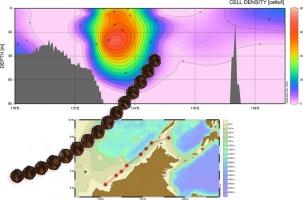Spatial distribution of toxic Alexandrium tamiyavanichii (Dinophyceae) in the southeastern South China Sea-Sulu Sea: A molecular-based assessment using real-time quantitative PCR (qPCR) assay |
| |
| Affiliation: | 1. Third Institute of Oceanography, Ministry of Natural Resources, Xiamen 361005, China;2. College of Ocean and Earth Sciences, Xiamen University, Xiamen 361102, China;3. Aquatic Resources Research Institute, Chulalongkorn University, Bangkok 10330, Thailand;4. Marine and Coastal Resources Research and Development Center, Central Gulf of Thailand, Department of Marine and Coastal Resources, Chumphon 86000, Thailand;5. Bachok Marine Research Station, Institute of Ocean and Earth Sciences, University of Malaya, 16310 Bachok, Kelantan, Malaysia |
| |
| Abstract: | 
In this study, a quantitative real-time PCR (qPCR) assay targeting the second internal transcribed spacer (ITS2) of the nuclear-encoded ribosomal RNA gene (rDNA) was developed for Alexandrium tamiyavanichii, a harmful tropical marine dinoflagellate. This species is of concern because it produces toxins that cause paralytic shellfish poisoning (PSP). The qPCR assay employed hydrolysis probe technology and showed high specificity, with a detection limit of 102 gene copies (less than one cell equivalent). Using this assay, the spatial distribution of A. tamiyavanichii was assessed, for the first time, in the southeastern South China Sea and the Sulu Sea. Plankton samples were collected from 71 stations during a scientific cruise from the Research Vessel Sonne as part of the joint EU project on Stratosphere ozone: Halogens in a Varying Atmosphere (SHIVA), conducted in November 2011. The highest cell densities were detected offshore of Kuching, southern Borneo (150 cells l−1) and exceeded the threshold level of 20–40 cells l−1 where the bioaccumulation of PSP toxins by shellfish is of concern. The distribution of A. tamiyavanichii was patchy horizontally with the highest cell concentrations found mainly offshore of southern Borneo, and a heterogeneous vertical distribution was observed above the pycnocline. The A. tamiyavanichii qPCR assay proved its applicability, specificity and sensitivity, and provides an alternative implementation tool for harmful microalgae monitoring programs. |
| |
| Keywords: | Detection Malaysian Borneo Paralytic shellfish poisoning Saxitoxin Second internal transcribed spacer |
| 本文献已被 ScienceDirect 等数据库收录! |
|

